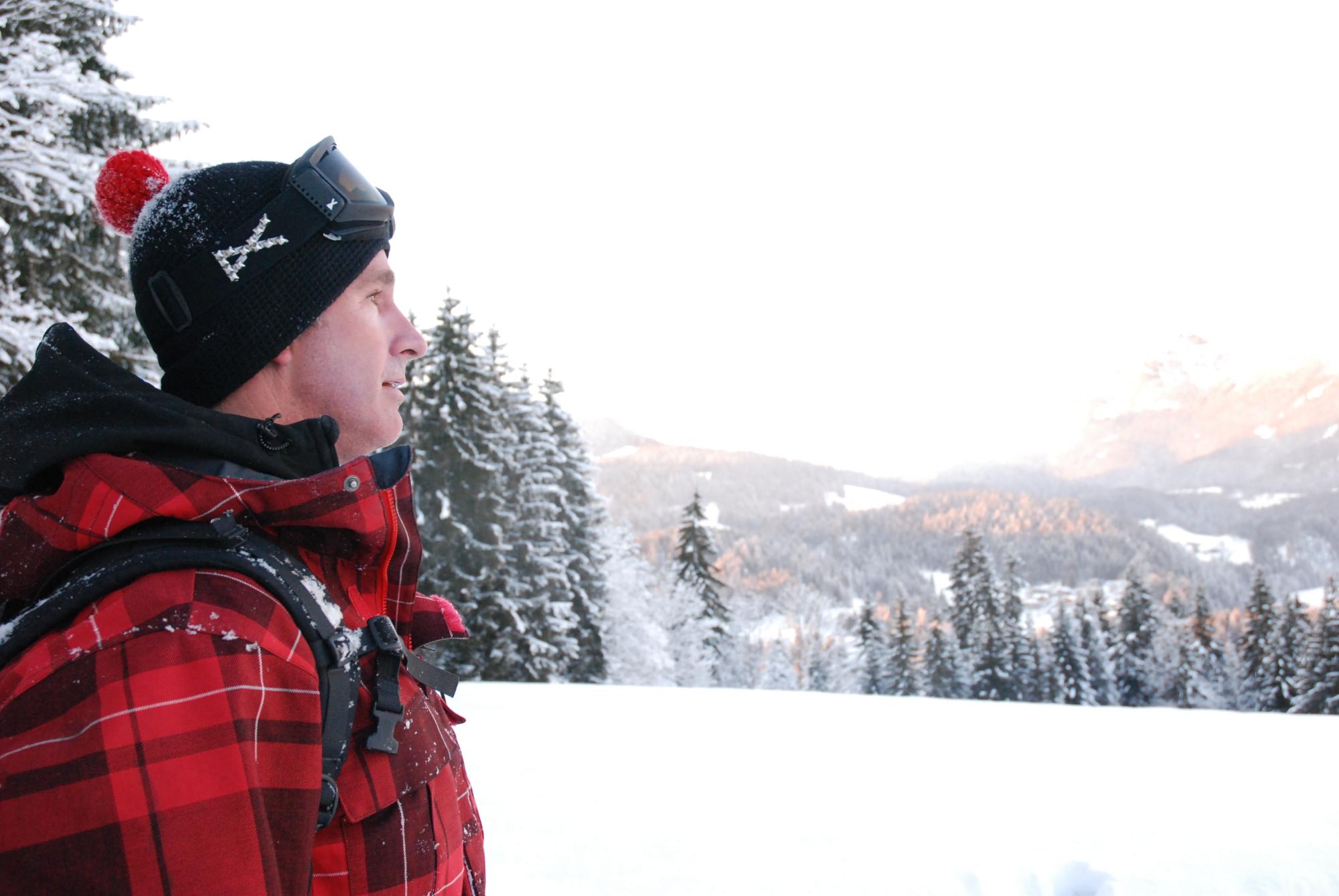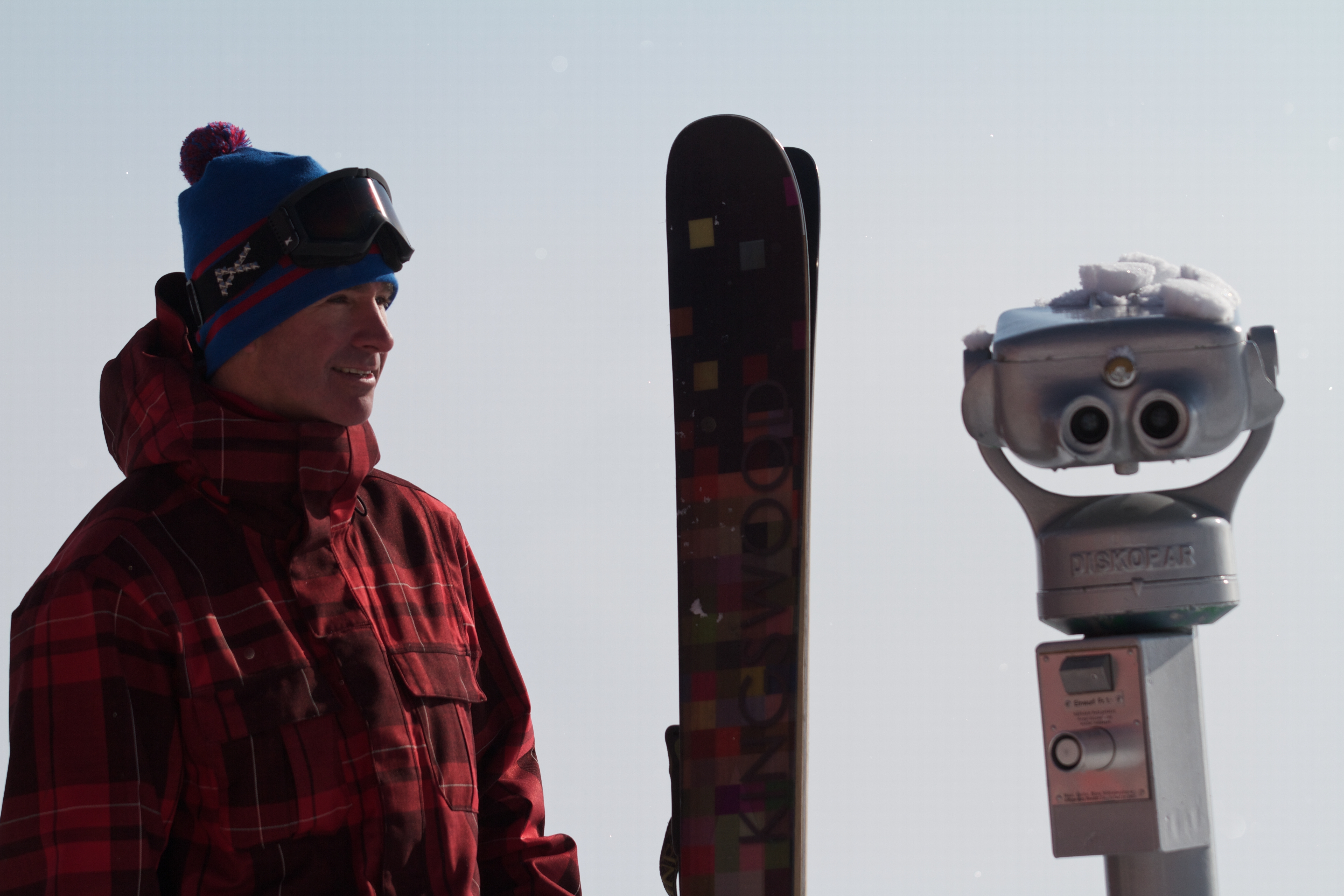Photo captured Alex Herbert and his Kingswood Skis
Words by Sam Masters
Landscape has the power to shape us. The food we grow, the views we love, the work we do, and the leisure activities we enjoy.
The Selwyn mountains exert a fascination over locals and visitors alike; drawn to the peaks by their beauty and challenge. Few have felt this attraction as profoundly as Alex Herbert – who built a ski company to tame the conditions at the Selwyn resorts.
At the tail end of the last millennium, the vast majority of skis were manufactured to perform well on groomed trails at the toe-twitch of holidaying intermediates.
Fat twin-tip skis were simply not available in New Zealand. Alex Herbert took matters into his own hands. In 1999 he cut up his favourite (and only) pair of skis into 86 strips to examine the cross sections. An action of far more consequence than when the conquistador Hernan Cortes burned his ships in 1519. Herbert would build a superior ski. Or he would have to take up tobogganing.
Herbert wanted a high-performance ski that would work in the capricious snow and terrain of the Canterbury high alpine. When conditions are right, this area has some of the best skiing and snowboarding in the world; a tasty mix of steeps, chutes, bowls, and backcountry bliss.

New Zealand’s maritime climate ensures there is always a healthy mix of snow conditions – and this is the true test of riders and their equipment.
Perhaps that’s why not even a marketing manager negotiating a pay rise would call the Selwyn resorts the best in the world. They are, however, the very soul of New Zealand freeride.
Mt Olympus, Craigieburn Valley, Broken River, and Temple Basin have attained a legendry global reputation. Wherever you travel in the world, adventurous freeride skiers and snowboarders have Selwyn atop their bucket list. These resorts have a mythical appeal for capturing something true about the national character itself; charming, tough, self-deprecating, fun, and friendly. This is the heaving cauldron of freeride action from which every Kingswood ski has emerged.

Herbert started Kingswood Skis in Lyttelton to make the skis he wanted: technical enough to eat up the variable snow conditions dished up in Selwyn ski resorts, burly enough to take the bumps and scrapes. It’s relatively easy to build a pair of skis. Making a great pair is tougher; the result of relentless incremental improvement for which the Japanese, naturally enough, have a word – kaizen.
Herbert made a few pairs of skis for his mates, and before he could say “I don’t have a business plan” the orders started rolling in. Herbert has remained true to the reason he started Kingswood – to allow him more time to ski. He is one of the few entrepreneurs who require commiseration when business is good – as this cuts into valuable powder time.
Herbert walks the talk. He beat that pretender Kent Kreitler on the freeride day of the World Heli Challenge, scored a full-page photo in Freeze magazine spinning off a 50-cliff when ‘taking your park game to the backcountry’ wasn’t even a cliché, and had a Lincoln 180 in the back pocket when most freeride/extreme skiers steered well clear of the park.
The real innovation was using laminated bamboo for the cores. Bamboo, a sustainable product, has excellent pop and rebound and is 20% stronger than maple. Herbert also made the skis fatter to work better in every kind of soft snow. Groomed trails constitute only a tiny fraction of the average ski resort’s total area. Herbert believes that there isn’t a great deal of point designing a ski that doesn’t work without the aid of a half-a-million-dollar snow-grooming machine. Incredibly his views were once anomalous in the ski industry.

Herbert’s design – incorporating large girth, a sidewall rather than the cheaper cap construction, and a twin tip for skiing backward – wasn’t revolutionary. Rather it was the intense distillation of effective ski design.
There is nothing in a Kingwood ski that is not expressly required for aggressive off-trail skiing.
"Our philosophy is about simplifying snow skis," says Herbert.
"We believe construction was better 20 years ago than it is today. We're a bit unconventional because we don't have retail outlets and we don't have a pro team. We're just trying to make solid skis for off-piste skiing."
Sometimes innovative and sometimes traditional (sidewall construction, made-to-order) Kingswood has remained hand-made and focused on what works best. At Mt Olympus. Rocker, sidecut and softer flex have crept into the range as Herbert strives to build the one-ski quiver; the ultimate all-round snow weapon.

When the truth cleaves so closely to the national mythology of the visionary entrepreneur building a world-beating product in their garage, you might be tempted to think the Kingswood story is a myth dreamt up by some marketing department.
Mythology is, however, just the history that people forgot to write down – and if you’re ripping on a great ski who has the time to do that?




